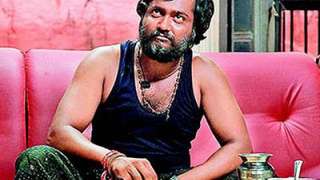MEDIA
Why seek Western validation?
www.thehindu.com | September 24, 2019
For many Western film critics, Indian cinema is often synonymous with Hindi cinema
Recently, The Guardian released its list of 100 best films of the 21st century. The only Indian (read Hindi) film in the list is Anurag Kashyap’s Gangs of Wasseypur. This mention attracted considerable attention in the Indian media. While some sections of the media praised the film, a few wondered if it is really that good.
Individual preferences
It should be noted that most lists are arbitrary and often reflect the preferences of the individuals who prepare them. We concur with some choices and disagree with others. But the veneration of the film because of its mention in the list points to a larger, deep-seated malaise in India: the need for Western validation.
There is also another problem with such lists. It is that for many Western film critics, Indian cinema doesn’t exist beyond Hindi cinema. Hindi cinema has a wider reach, clout and visibility. Hindi mainstream actors also have a pan-Indian presence. Some of them regularly act in non-Hindi films. Hindi cinema is also widely written about in popular media and academia. Other film cultures and industries in India do not enjoy this exposure. And so, in the larger Western imagination, Hindi cinema is synonymous with Indian cinema or representative of it. I wonder if parts of the West even know about the other film cultures that thrive in India and the brilliant films that have been made in non-Hindi film industries of India, which are as good as, if not better than, Gangs of Wasseypur.
This is not to say that Gangs of Wasseypur is not a good film. It is not a mainstream Bollywood film. Kashyap decentres the gangster-mafia conversation beyond Mumbai and throws us into a world of characters who don’t look, feel, or talk like their counterparts in other Hindi mafia-gangster films. I would say that Kashyap retains many formulaic Bollywood conventions of the genre with his use of music, violence, sex, and a love story, but situates these conventions in a milieu that is foreign to mainstream Hindi cinema audiences. He uses local sounds, actors and dialects. The lead characters are as vulnerable as their opponents. There are no hero characters in the film. He also exposes the unholy nexus between politics and unorganised crime and highlights issues of caste. Kashyap renders formula in a non-formulaic way. The first part of Gangs of Wasseypur is captivating indeed, but the second part falters in some ways.
Other contenders
Having said that, is it really the best Indian film of the 21st century? I don’t think so. For that spot, there are many contenders from non-Hindi film cultures of India. Lijo Jose Pellissery’s Malayalam crime drama, Angamaly Diaries, is a remarkable film. It shows how local youth are drawn to crime and eventually form a gang. It is also a commentary on the aspirations and needs of a social class. Rajeev Ravi’s Kammatipaadam explores similar territory. Vetrimaaran’s films in Tamil are no less. Karthik Subbaraj made Jigarthanda, an ode to gangsters. Ameer Sultan’s Paruthiveeran gave me the chills. What about Gurvinder Singh’s Punjabi films Anhe Ghore Da Daan and the intensely lyrical Chauthi Koot? Raam Reddy made the genre-bending Kannada film, Thithi. In Marathi, Nagraj Manjule made Fandry, Chaitanya Tamhane made Court, Avinash Arun made Killa. Even within the Hindi film fold, Nandita Das debuted with a searing commentary on the 2002 Gujarat riots, Firaaq. There are others like Masaan and Newton with inventive storytelling. Rajat Kapoor made the perplexing Ankhon Dekhi which deserved more discussion.
These show that we ought to celebrate and recognise India’s best cinema for reasons that are entirely our own, not because some of these films are appreciated by the West.
Kunal Ray teaches literary and cultural studies at FLAME University, Pune
(Source:https://www.thehindu.com/opinion/op-ed/why-seek-western-validation/article29492434.ece)

